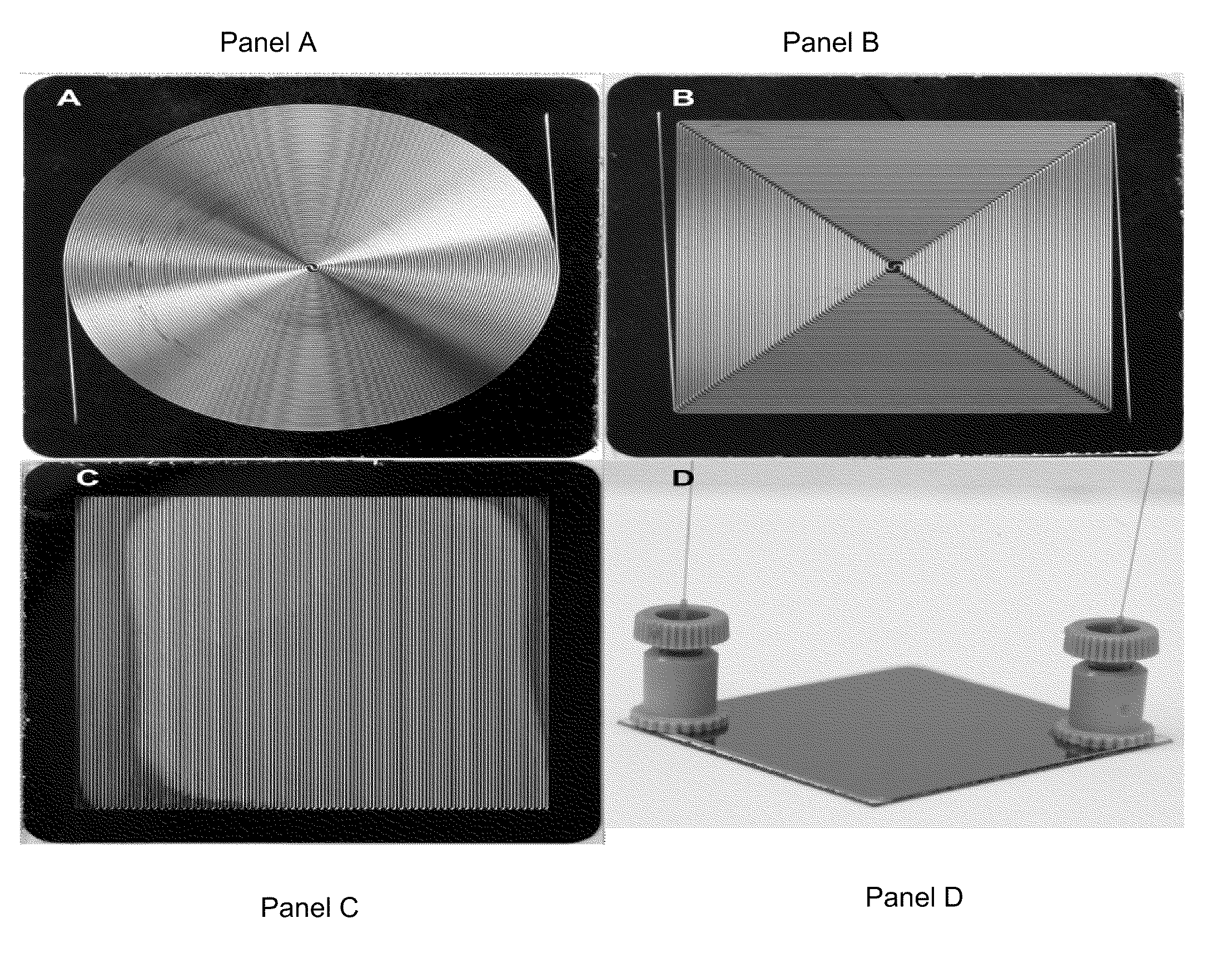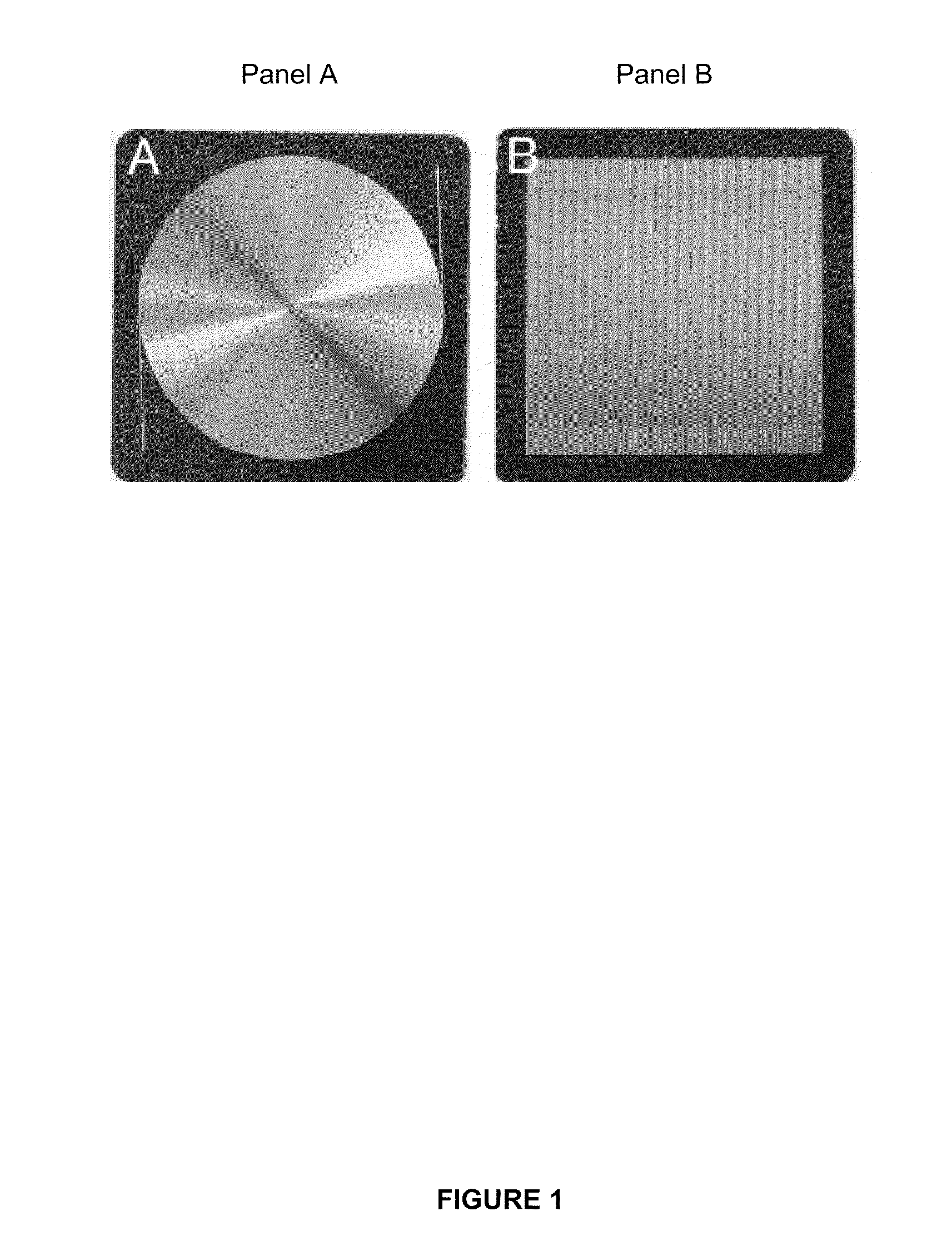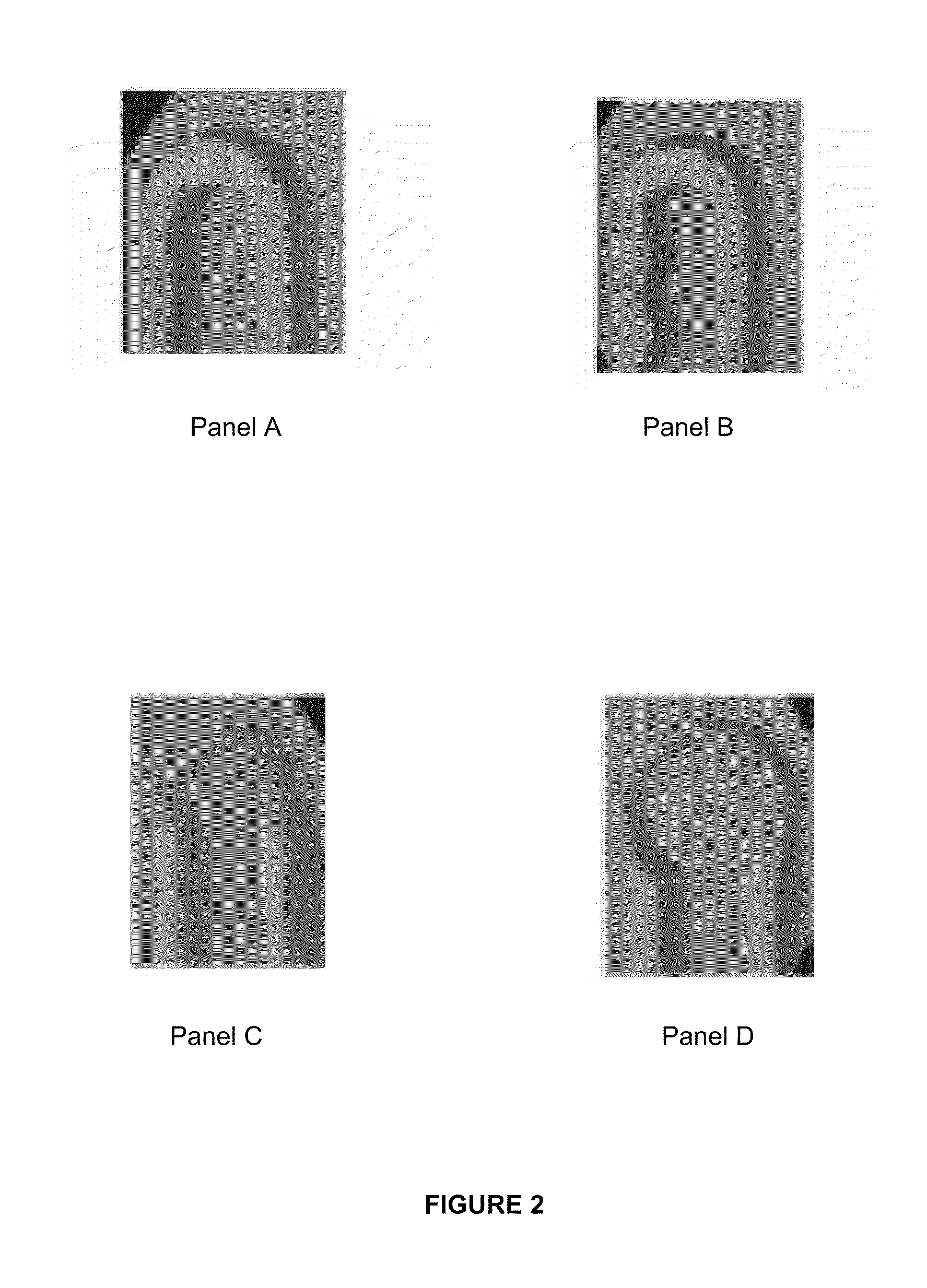Column design for micro gas chromatograph
a gas chromatograph and microcolumn technology, applied in the direction of dispersed particle separation, instruments, separation processes, etc., can solve the problems of insufficient individual carrying capacity, inconvenient use, and insufficient size of conventional gcs, etc., to achieve good gc resolution
- Summary
- Abstract
- Description
- Claims
- Application Information
AI Technical Summary
Benefits of technology
Problems solved by technology
Method used
Image
Examples
specific example 1
Design and Fabrication of Micro-Columns
[0093]Microfabrication started with a double side polished silicon wafer (4″ diameter, 250 μm thick, 5-20 ohms-cm p-type) from Silicon Quest International. The wafer was sputter coated with 1000 Å thick aluminum on one side. The aluminum layer protected the silicon surface from getting damaged during the fabrication steps prior to anodic bonding. Shipley SPR220-7 photoresist was spin-coated on both sides of the wafer at 3000 rpm. Double side lithography was performed to obtain an image of micro-channels on the aluminum side and fluid transfer holes on the silicon side. The chrome mask set for lithography was fabricated by Photo Sciences Inc. using a laser pattern generator. Micro-channel mask consisted of four 3.2 cm×3.2 cm dies each filled with 100 μm wide and 3 m long micro-channel folded in serpentine, circular-spiral, or square-spiral configuration. The serpentine micro-column design consisted of 25.9 mm long straight segments and turns of ...
specific example 2
Passivation of Micro-Columns
[0094]Organosilicon hydride passivation using phenyltris(dimethylsiloxy)silane (Ah3P) (Gelest, SIP6826) was performed as disclosed in U.S. Appln. No. 61 / 021,620. The passivation was performed by dynamically coating the surface with a one micro-column length plug of neat reagent. A brass reservoir manifold containing the solution was attached on one of the micro-column access ports and the plug was pulled using a 660.4 mm Hg vacuum at the second access port. After the liquid plug exited the micro-column was heat-treated in a vacuum annealer (300 microns Hg) at a rate of 8° C. min−1 to 375° C. and holding at the final temperature for 4 hours. The vacuum annealer was purged with nitrogen for 20 minutes before applying vacuum to ensure oxygen absence. The micro-column was cooled to room temperature before exposing to atmosphere.
specific example 3
Stationary Phase Coating
[0095]5% polar stationary phase, OV-5 vinyl gum obtained from Ohio Valley Specialty Company (Marietta, Ohio) was used as the stationary phase. The coating solutions were prepared in hexamethyldisilazane treated 12×32 vials obtained from Alltech (#72670). The stationary phase (in the range of 0.05-0.07 gm) was transferred to a vial using the closed end of a melting point capillary (Fisher Scientific, 12-141-5). 0.2 μm filtered pentane was injected into the capped vial using a 500 ml gas-tight syringe (Supelco, 509485) to produce a 4% (w / v) coating solution. The phase was dissolved by sonicating the vial for 20 minutes. Dicumyl peroxide (DCP) (Sigma Aldrich, >99%) in the form of freshly prepared 2% (w / v) toluene solution was added to the coating solution using a 10 μL syringe (Agilent Technologies, 5181-3354) to achieve a concentration of 0.2% (w / w) of the stationary phase.
[0096]The coating procedure was slightly modified from the methodology disclosed in U.S. ...
PUM
 Login to View More
Login to View More Abstract
Description
Claims
Application Information
 Login to View More
Login to View More - R&D
- Intellectual Property
- Life Sciences
- Materials
- Tech Scout
- Unparalleled Data Quality
- Higher Quality Content
- 60% Fewer Hallucinations
Browse by: Latest US Patents, China's latest patents, Technical Efficacy Thesaurus, Application Domain, Technology Topic, Popular Technical Reports.
© 2025 PatSnap. All rights reserved.Legal|Privacy policy|Modern Slavery Act Transparency Statement|Sitemap|About US| Contact US: help@patsnap.com



